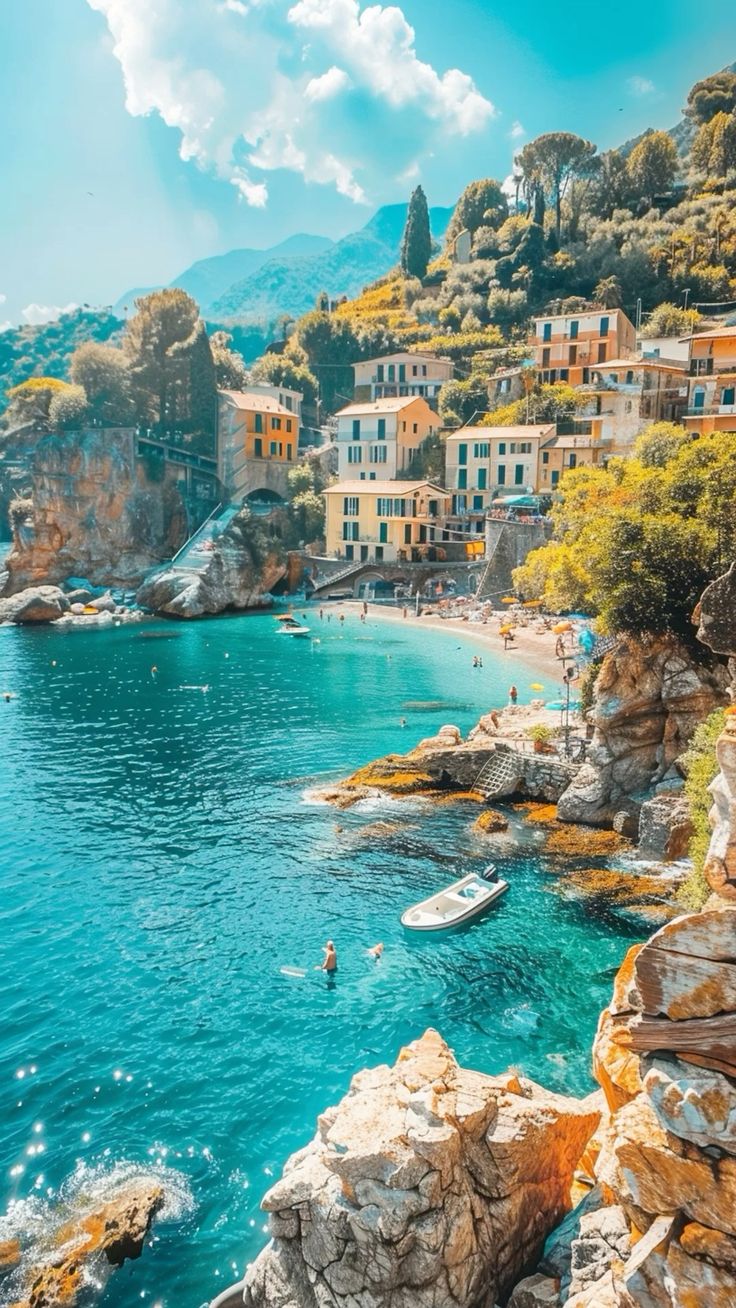Amalfi Coast, Italy: A Stunning Paradise with Timeless Charm
The Amalfi Coast, located in southern Italy, is a breathtaking stretch of coastline along the Tyrrhenian Sea, renowned for its dramatic cliffs, colorful villages, and Mediterranean charm. Famous for its pristine beaches, delicious cuisine, and historical landmarks, the Amalfi Coast has become one of the most sought-after tourist destinations in the world. With a history dating back centuries, this enchanting location continues to capture the hearts of travelers from all over the globe. Let’s explore the Amalfi Coast’s biography, daily life, history, significance, and the impact it has on society today.
A Historical Snapshot of the Coast
The Coast has a rich history that dates back to Roman times, although its prominence began in the Middle Ages. The coastal region was once an important maritime republic, with the city of Amalfi being a center for trade and culture. The area flourished as a maritime power, competing with other Italian cities like Venice and Genoa. Over the centuries, the Amalfi Coast was influenced by various cultures, including the Arabs, Normans, and Byzantines, which is reflected in its unique architectural styles, religious practices, and cultural traditions.
Throughout the 18th and 19th centuries, the Amalfi Coast gained fame as an artistic and literary destination, attracting intellectuals, poets, and artists who sought inspiration from its scenic landscapes. Today, the coastline’s historical significance is preserved in the towns and villages that line the coast, such as Amalfi, Positano, Ravello, and Sorrento.
The Impact of the Coast on Daily Life
For the residents of the Coast, daily life revolves around their relationship with the land and the sea. Fishing, agriculture, and tourism are the primary sources of income for the local population. The terraced hillsides, which have been carefully cultivated for centuries, yield crops such as lemons, olives, and grapes. These agricultural products, particularly the famous Amalfi lemons, are integral to the region’s economy and cuisine. Local artisans are also well-known for producing handcrafted goods, including ceramics and textiles, that reflect the area’s rich cultural heritage.
In towns like Amalfi and Ravello, locals live a slow-paced lifestyle, with an emphasis on family, community, and tradition. The residents take great pride in preserving their cultural and historical heritage, and many of the villages still maintain traditional festivals and events that honor their history. This close-knit community life creates a welcoming atmosphere for visitors, who are often charmed by the warmth and hospitality of the people.
The Significance of the Coast
The Coast holds significant importance, not only for Italy but also for the world. The region was designated a UNESCO World Heritage site in 1997 due to its outstanding universal value, both for its natural beauty and its cultural landscape. The cliffs, terraced slopes, and Mediterranean vegetation are stunning, while the towns that dot the coast offer a glimpse into a rich historical past.
Tourism is a major driving force for the Coast, attracting millions of visitors each year. The area’s picturesque beauty and cultural landmarks draw tourists from all walks of life, making it a key contributor to Italy’s economy. The Amalfi Coast is also important for the preservation of ancient traditions, from the local cuisine to the art of fishing and craftsmanship.
In addition to tourism, the Coast has become a center for high-end luxury and international events. Celebrities and artists often choose to visit or settle in the area, further enhancing its status as a global destination. The region’s influence on art, culture, and design is evident in the many luxury resorts, art galleries, and boutique shops that line the coast.
Fun Facts About the Coast
- Amalfi Lemons: The region’s lemons are renowned worldwide. The lemon groves produce some of the most fragrant and delicious lemons, which are used in a variety of local products, including limoncello, a popular Italian lemon liqueur.
- Positano’s Charm: Positano, one of the most famous villages on the Amalfi Coast, is known for its steep streets, colorful buildings, and stunning views of the sea. It’s often referred to as the “Vertical City” due to its unique positioning along the cliffs.
- Historic Cathedrals: The Cathedral, located in the town of Amalfi, dates back to the 9th century and features stunning Romanesque and Byzantine architecture. It is an important religious and cultural landmark.
- Villa Rufolo in Ravello: Ravello is home to Villa Rufolo, a historic villa with magnificent gardens overlooking the coastline. The villa is famous for hosting the Ravello Festival, a renowned music and arts festival.
- UNESCO Heritage Site: The Coast is a UNESCO World Heritage site, recognized for its stunning natural landscapes, historical villages, and cultural significance.
Conclusion: The Enduring Significance of the Coast
The Coast is not just a tourist destination; it is a place of deep cultural, historical, and societal importance. From its ancient roots as a maritime power to its modern-day significance as a luxury getaway and a symbol of Italian beauty, the Amalfi Coast remains a key part of Italy’s identity. For those lucky enough to visit, it offers an unparalleled experience of beauty, culture, and history, along with a sense of tranquility and connection to the Mediterranean way of life.
Wishing You a Dream Visit to the Coast: Whether you are seeking relaxation, adventure, or inspiration, the Amalfi Coast offers something for everyone. Its timeless beauty and rich heritage will leave an everlasting impression on anyone who steps foot along its shores.










